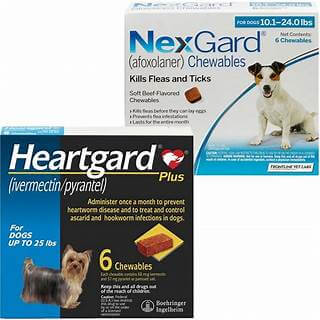
Breathing problems in cats can be alarming for any pet parent. When your cat starts panting, breathing rapidly, or making unusual sounds while inhaling or exhaling, it could be a sign of a serious underlying health issue.
Unlike dogs, cats rarely exhibit breathing difficulties unless there is a genuine issue. Understanding the causes, signs, and available treatments can help you act quickly and keep your feline friend safe.
Understanding Breathing Problems in Cats
Healthy cats breathe quietly and smoothly. The normal respiratory rate for cats is 20–30 breaths per minute while at rest. If you notice your cat breathing faster, louder, or through the mouth, it’s time to pay close attention.
Difficulty breathing in cats (medically called dyspnea) refers to labored or strained breathing. It can happen due to problems in the lungs, heart, nasal passages, or even the chest cavity.
There are three main types of breathing issues seen in cats:
- Dyspnea – labored or difficult breathing
- Tachypnea – rapid breathing
- Panting – open-mouth breathing, which is unusual for cats
Common Causes of Breathing Difficulties in Cats
There are several possible reasons your cat may struggle to breathe. Some are mild and treatable, while others require immediate veterinary attention.
1. Asthma
Just like humans, cats can suffer from asthma. Feline asthma is an allergic reaction that causes inflammation and narrowing of the airways. Common triggers include dust, smoke, pollen, perfumes, or aerosol sprays.
Signs: Wheezing, coughing (that may sound like gagging), and open-mouth breathing after activity.
2. Heart Disease
Heart diseases, such as congestive heart failure, may cause fluid accumulation around the lungs or within the chest, leading to breathing difficulties in cats.
Signs: Rapid breathing, lethargy, blue or pale gums, and reluctance to move.
3. Respiratory Infections
Upper respiratory infections are common, especially in kittens or shelter cats. Most of these infections are triggered by viral agents, such as feline herpesvirus or calicivirus.
Signs: Sneezing, nasal discharge, watery eyes, and noisy breathing.
4. Pleural Effusion
This is a condition where fluid accumulates around the lungs, preventing them from expanding properly. It may occur due to infection, trauma, or heart issues.
Signs: Shallow breathing, reluctance to lie down, and an extended neck while breathing.
5. Foreign Object in Airway
Sometimes, cats accidentally inhale small objects, such as grass blades or bits of food, which can block their airways and cause immediate distress.
Signs: Sudden coughing, gagging, pawing at the mouth, or panic.
6. Allergic Reaction
Allergies to insect bites, food, or environmental triggers can cause swelling around the face or throat, making it difficult to breathe.
Signs: Facial swelling, drooling, vomiting, or collapse in severe cases.
7. Tumors or Growths
Masses in the nasal passages, throat, or lungs can obstruct airflow. These are more common in older cats.
Signs: Persistent nasal congestion, noisy breathing, weight loss, and decreased appetite.
Symptoms That Indicate Breathing Problems
Here are some warning signs that your cat may be struggling to breathe:
- Open-mouth breathing or panting
- Rapid or shallow breaths
- Flared nostrils
- Blue, gray, or pale gums and tongue
- Extended neck and head held low
- Wheezing, coughing, or rattling sounds
- Lack of appetite and energy
If you notice any of these symptoms, take your cat to a veterinarian immediately. Breathing issues can escalate quickly and become life-threatening.
Diagnosis: What to Expect at the Vet
When you bring your cat to the vet, they will start by checking the breathing rate, heart sounds, and oxygen levels. Depending on the symptoms, they may perform:
- Radiographs or ultrasound scans help evaluate your cat’s lungs and heart.
- Blood tests identify infections or potential organ problems.
- Oxygen Saturation Test to evaluate how well your cat is breathing
- Endoscopy or CT scan for deeper airway issues
The vet may initially place your cat in an oxygen chamber if breathing is severely compromised.
Treatment Options
Treatment depends on the underlying cause:
- For asthma: Corticosteroids and bronchodilators help reduce airway inflammation. Your veterinarian may also recommend using an inhaler specifically designed for cats.
- For heart disease: Diuretics (to remove excess fluid) and heart medications are prescribed to improve heart function.
- For respiratory infections, antibiotics or antivirals may be used, along with steam therapy or the use of humidifiers for added comfort.
- For allergies, identifying and removing allergens, along with the use of antihistamines or steroids, can be helpful.
- For pleural effusion or tumors, surgical drainage or other interventions may be necessary.
Early and proper treatment can significantly improve your cat’s comfort and accelerate recovery.
At-Home Care and Prevention Tips
After your vet visit, follow these tips to support your cat’s respiratory health:
- Avoid exposure to smoke, aerosols, or strong scents.
- Use a dust-free litter and keep your home clean to minimize allergens.
- Maintain your cat's ideal weight to reduce the strain on their lungs and heart.
- Schedule regular vet checkups to monitor your cat’s health, especially if they’re older.
- Provide a stress-free environment. Anxiety can sometimes worsen breathing issues.
- Use air purifiers in your home if your cat has asthma or allergies.
When to Seek Emergency Help
Take your cat to the vet or an emergency clinic right away if you notice:
- Open-mouth breathing for more than a few seconds
- Blue or gray gums
- Collapsing or lying down with heavy breathing
- Sudden onset of coughing or choking
Cats often hide their discomfort, so by the time you notice breathing issues, it may already be a serious problem. Quick action can save your cat’s life.
Final Thoughts
Difficulty breathing in cats is never something to ignore. Whether it’s due to asthma, infection, or heart problems, timely veterinary care is essential. Keeping your cat’s environment clean, allergen-free, and stress-free can prevent many respiratory problems.
If your cat is showing any signs of labored breathing, don’t delay—consult your veterinarian immediately to ensure your furry friend can breathe easy again.






